Rolled, steel-cut, or instant, flavored or unflavored: the types of oats out there are almost endless! But do you know the difference, and what type is best for different dietary needs and recipes? In this article, you will learn everything you need to know about this incredible staple food, plus some healthy recipes with oats!
Steel-cut, Rolled, and Quick Oats: Different types of oats for different needs!
Oats are a staple in most Americans’ kitchens, and this doesn’t come as a surprise! Indeed, it is such a versatile and nourishing ingredient, that can be used in both salty and sweet preparations. But did you know that different types of oats can have slightly different nutritional profiles and that some of them are healthier than others? Plus, different types work best in different recipes. Let’s discover why and how!
What Makes Them Different?
The main difference between rolled oats, steel-cut oats, and quick oats is how they’re manufactured. All types begin as whole oats (groats), from which the outer layer (the hull) is stripped away, leaving the fiber-rich bran, the endosperm, and the germ. From there, the oats are either steel-cut, rolled, or further processed into quick oats (which is a sub-type of rolled oats).
From here, it is apparent how the first main difference between these different types of oats is the degree to which they are processed – hence the difference also in their nutritional profiles. Let’s break them down more in detail.
Steel-cut Oats: The least processed
Steel-cut oats -or Scottish oats – are the least processed type of oats, and those containing the most fiber (even though all types of oats are excellent sources of fiber).
To produce steel-cut oats, the groats are chopped into pieces with large steel blades. This kind of oat has a chewier texture and nuttier flavor than the other two types. They also take longer to prepare, with average cooking times varying from 15–30 minutes.
Moreover, they have a lower glycemic index than rolled or quick oats – as they contain more fiber – and for this reason, the body can digest and absorb them more slowly. This results in a slower rise in blood sugar, which in turn keeps us fuller for longer and cuts down cravings for overly processed, sweet foods.
Because of their “denser” consistency, steel-cut oats are perfect in stews and soups – as they absorb less water than rolled oats – or for adding to meatloaves, stuffings, and even plant-based burgers (you will find an incredible recipe for this down below). In addition, they can also be used for the preparation of oatmeal (the result will be a thicker, “chewier” porridge).
“Old-fashioned” Rolled Oats: More processed, yet still highly nutritious
Old-fashioned rolled oats are easily the most popular type on the market: they are classic flat-looking oats.
Rolled oats are groats that have undergone a specific process of steaming and pressing. They have a milder taste and a softer texture than steel-cut oats. They also require much less time to prepare – usually between 5 to 10 minutes – because they have already been partially cooked.
However, don’t worry about the fact that they are more processed than steel-cut oats: indeed, the difference in their nutritional profile is only minimal. Rolled oats are an amazing source of fiber, vitamins, minerals, and energizing complex carbohydrates. Steel-cut oats contain a little more fiber.
As far as their use, in addition to being the perfect ingredient for creamy oatmeals, rolled oats can be added to a variety of baked goods such as cookies, muffins, waffles, and smoothies.
Quick and Instant Oats: the fastest to cook
Quick oats – are rolled oats that undergo further processing to reduce cooking time. They can be considered as a sub-type of rolled oats, as they are equally partially steamed and then rolled (thinner than old-fashioned rolled oats).
This process makes them easy to absorb liquids and makes them very quick to cook. Indeed, for their preparation, they only need a few minutes on the skillet (you can even microwave them). They have a mild taste and a soft, mushy texture.
It is also necessary to distinguish between quick oats and instant oatmeal. Packaged instant oats can contain other ingredients such as skim milk powder, sweeteners, sugar, and various – artificial and not – flavors. This is why it is essential to always check the nutritional label before deciding which type of product to buy: prefer those with a minimal ingredients list, low sugar, and with no additives, preservatives, or artificial sweeteners.
As far as their nutritional content, the main difference between quick and instant oats and steel-cut oats is their glycemic index (GI): because instant oatmeal has been processed to cook more quickly, it is also broken down and digested more quickly by your body, giving it a higher glycemic index.
To lower the glycemic index of instant oatmeal, all you have to do is combine it with a little lean protein (such as yogurt, milk, or even protein powder) and a source of healthy fats (for example chopped nuts, chia, and hemp seeds, or any type of nut butter).
Which Type of Oat is the Healthiest?
Despite the differences in processing, there are marginal nutritional differences between rolled oats, steel-cut oats, and quick oats.
Plain rolled oats and steel-cut oats contain similar amounts of nutrients like fat and protein, with very slight differences in carbohydrates, fiber, and calories – steel-cut containing a little more fiber. On the other hand, quick oats do have a slightly higher glycemic index compared to the other two types.
However, what makes the biggest difference is what is added to them. For example, instant oats can be loaded with sugar, salt, artificial ingredients, and preservatives. Therefore, as explained above, make sure to carefully read the ingredient list of the product you are going to buy!
Oats: All the health benefits!
As we all have understood by now, the nutritional differences between different types of oats are minimal. But what are the main health benefits of oats?
Rich in Soluble Fiber
First of all, oats are rich in soluble fiber (including the powerful fiber beta-glucan), which helps prevent cholesterol from being absorbed into the body, as well as decreasing LDL (“bad”) cholesterol levels. In addition, soluble fiber is associated with a reduced risk of heart disease and lower blood pressure. Last but not least, as explained above, the fiber contained in oats can help control blood sugar spikes, improve insulin sensitivity, and can therefore also be consumed by diabetic subjects.
The fiber in oats is also great to promote regular bowel movements and avoid constipation, and assisting in weight loss and management, as it helps feel fuller and more satiated for longer.
A Great Source of Vitamins, Minerals, and Antioxidants
Second, oats are loaded with minerals and vitamins, the main ones being magnesium, phosphorous, and thiamin (B1). In addition, it is full of antioxidants and polyphenols, which are beneficial plant compounds. The most notable antioxidant is avenanthramide, which has powerful anti-inflammatory and anti-itching properties.
Improve your sleep and mood with oats!
Third, oats are a good source of melatonin and complex carbohydrates, which can allow more tryptophan to get into your brain and consequently help you sleep better. Furthermore, oats contain B6, a co-factor that assists in the production of serotonin (the “feel-good hormone”).
A Gluten-Free Cereal
Last but not least, oats are naturally gluten-free, making them a great option for people with celiac disease. However, processed oats can become contaminated with gluten if they are manufactured in facilities that are shared with other grains that do contain gluten. Therefore, be aware of this if you are suffering from life-threatening gluten allergies, and make sure to only buy oats processed in dedicated plants.
Half a cup (40 grams) of plain rolled oats contains:
- Calories: 154
- Protein: 6 grams
- Fat: 3 grams
- Carbs: 28 grams
- Fiber: 4 grams
- Thiamin (B1): 13% of the RDI
- Iron: 10% of the RDI
- Magnesium: 14% of the RDI
- Phosphorus: 17% of the RDI
- Zinc: 10% of the RDI
- Copper: 8% of the RDI
- Manganese: 74% of the RDI
- Selenium: 17% of the RDI
Interesting Facts About Oats
- Oats were one of the earliest cereals cultivated by man. They were known in ancient China as long ago as 7,000 B.C.
- The ancient Greeks were the first people known to have made porridge from oats.
- The main purpose of using oats in the past was to make beer.
- Oats are annual plants and can reach up to 1.5m in height (about 5 feet).
- Currently, the Russian Federation is the world’s largest oat producer with a production of 4.5 million tons per year.
- Seventy-five percent of U.S. households have oatmeal in their cupboard.
Ingredient Selection Tips: How to choose the best oats
Today there are a lot of oats producers and brands on the market. Therefore, here are some tips on how to choose the best oats.
First of all, make sure to check the ingredient list of the products you are going to buy. Avoid those containing sweeteners, artificial flavors, salt, preservatives, and additives. The shorter the list, the better (ideally, it should just contain oats).
In addition, an increasing number of brands are opting for organic production methods. Therefore, look for appropriate markings on the packaging. Also try to buy from local producers. This is generally better both for the environment and for the final quality of the product.
The Cultivation of Oats
Nowadays, oats are mainly grown extensively. However, if you have a small piece of land, you can try to cultivate your own oats, as they don’t require much maintenance work.
The minimum temperature for seed germination is 1-2 degrees Celsius (~34 degrees Fahrenheit), and the ideal temperature is 20-25 degrees Celsius (~68-77 degrees Fahrenheit). It can withstand early morning frosts at temperatures down to -4C (~25F). Regarding the soil, the best choice is an acidic one, with a low pH value.

Oat plants also require a fair amount of water to thrive. This is why it is not recommended to plant oats in dry, arid climates. On the other hand, wet and humid areas yield a greater and qualitatively better harvest.
My Favorite Healthy Oat Recipes
Oats are a true staple in my kitchen: they are not only super healthy but also very versatile, as they are great in both sweet and savory dishes.
I actually have a whole post dedicated to my top 5 Plant-Based Oatmeal Breakfasts, all extremely easy to make, energizing, and simply delicious. Other healthy breakfast recipes I made using oats as the main source of carbs and fiber are my Healthy Strawberry Rhubarb Baked Oats, my Baked Oatmeal with Apples and Cranberries, my Apple Cinnamon Overnight Oat Parfait, and my Pumpkin Spice Overnight Oat Parfait.

In addition, I love to use oats for the preparation of healthier dessert-like snacks, such as these Apple Pie Oatmeal Breakfast Cookies, and Pumpkin Pie Oatmeal Cookies, as well as these delicious Beet Date Carrot Cake, Strawberry Chia Seeds Pudding, and Tart Cherry Chocolate Almond Energy Bars.
And this is not all! Oats can be a great addition also to savory dishes, such as my Lentil Beet Burgers, as well as my 50/50 Beef + Veggies Burger. In both cases, I used them mainly for their excellent ingredient binding.
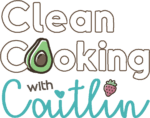
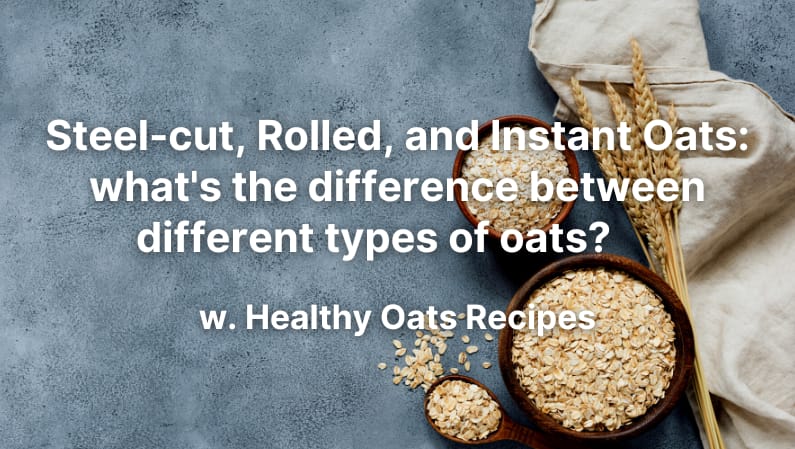
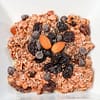
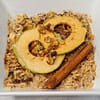
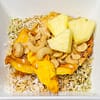


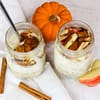

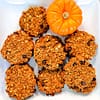
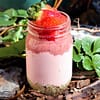
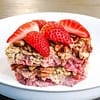
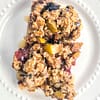


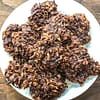
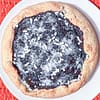



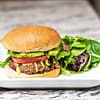



Pingback: 5 Foods You Should Eat Daily in 2023! - Clean Cooking with Caitlin
Pingback: Chocolate Crostata (vegan and gluten-free recipe)
Pingback: Chocolate Crostata (vegan and gluten-free recipe) | Recettes Rrepes
Pingback: Chocolate Peanut Butter No-Bake Cookies (plant-based & g. f.)